Law & Politics
A Photographer Is Suing Tattoo Artist Kat Von D After She Inked His Portrait of Miles Davis on a Friend’s Body
The potential ramifications of a ruling in the case are fascinating.
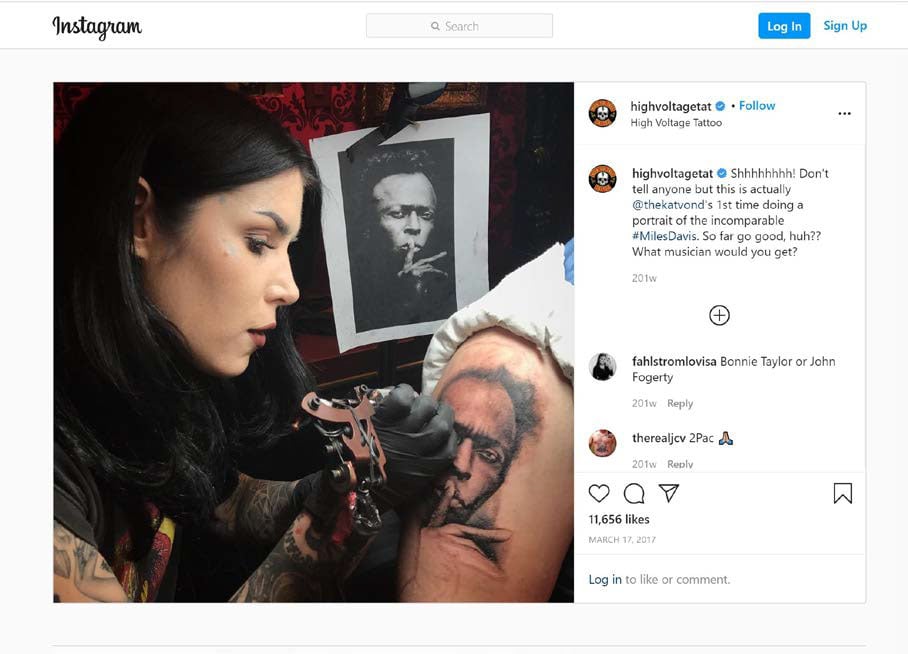
The potential ramifications of a ruling in the case are fascinating.

If you copyright a work of art, does that prevent other people from turning that image into a tattoo? That’s the question set to be decided by a jury in California federal court, where the case of photographer Jeffrey B. Sedlik versus celebrity tattoo artist Kat Von D is due to go to trial.
“It is, as far as I know, the first case in which a tattoo artist has been sued for an allegedly copyrighted image on a tattoo on a client’s body,” Aaron Moss, an attorney at Greenberg Glusker Fields Claman & Machtinger LLP, who is not involved in the case, told Bloomberg.
Von D has parlayed her success as a tattoo artist into appearances on the reality tv series Miami Ink and LA Ink. The Instagram account for her Los Angeles tattoo parlor, High Voltage, has more than 900,000 followers.
In March 2017, Von D, whose legal name is Katherine Von Drachenberg, published the first of a series of Instagram posts of a tattoo based on a Sedlik’s 1989 photograph of jazz legend Miles Davis, holding a finger to his lips.
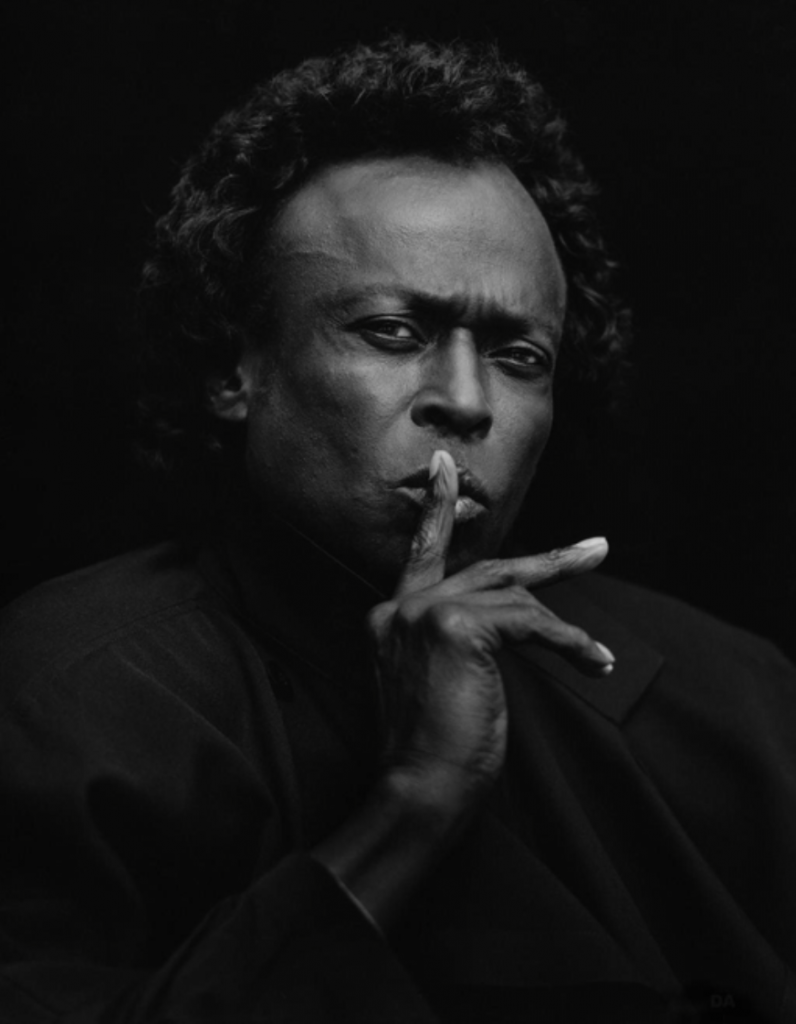
Jeffrey B. Sedlik’s photo of Miles Davis. Photo courtesy of court filings.
In 2021, Sedlik responded by suing Von D, claiming that the tattoo was an unauthorized derivative work, and that creating it and posting it on social media was an infringement of his copyright.
After reviewing legal filings from both sides, U.S. District Judge Dale S. Fischer has decided to bring the case to trial. A jury will be asked to decide whether or not the tattoo falls under the doctrine of fair use, as well as if Von D’s use of Sedlik’s image denied the photographer a licensing opportunity.
Sedlik declined to comment for this story, and Artnet News did not hear back from Von D’s attorneys.
The potential ramifications of a ruling in the case are fascinating.
“A finding of infringement would effectively make public display of the tattooed person’s arm an act of infringement,” Amelia Brankov, a copyright lawyer not involved in the case, told Artnet News. “This could give pause to tattoo artists who are asked to ink third-party imagery on their clients.”
“Holding tattoo artists civilly liable for copyright infringement will necessarily expose the clients of these artists to the same civil liability anytime they choose to get tattoos based on copyrighted source material, display their tattooed bodies in public, or share social media posts of their tattoos,” Von D’s lawyers wrote in a legal filing. “That is not the law and cannot be the law.”
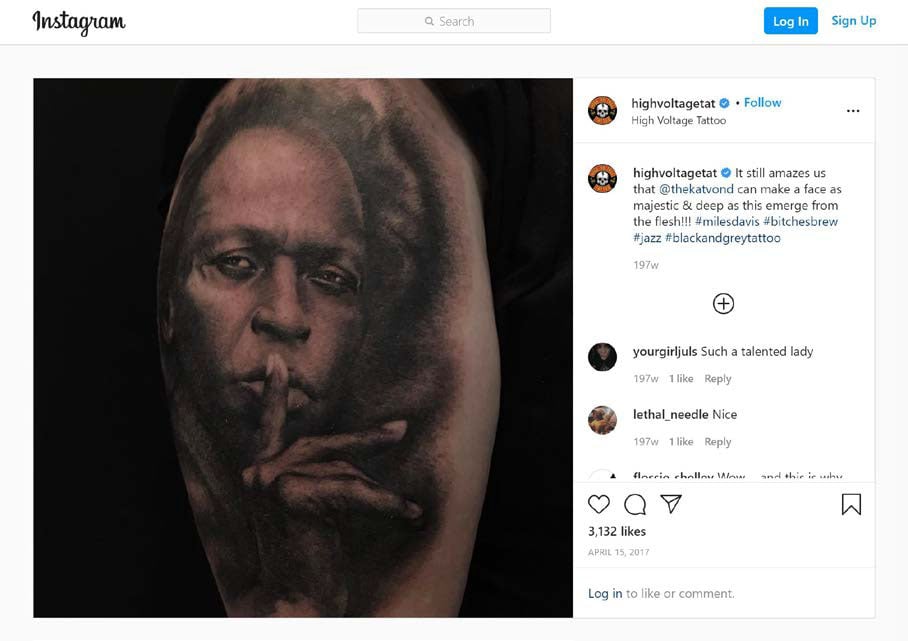
Kat Von D’s Miles Davis tattoo, as shared on her Instagram. Screenshot from court filing.
Sedlik’s photo, which originally appeared on the cover of Jazziz magazine, was featured in Life magazine’s annual “Pictures of the Year” issue. The photographer said that he believed he had previously licensed the portrait for use in a tattoo design.
“Sedlik has raised a triable issue as to whether there is a market for future use of the portrait in tattoos,” Fischer wrote in her most recent order sending the case to trial.
“There was expert testimony in the case that it was established practice in the tattoo industry not to obtain licenses for source material,” Brankov said, “but the judge found that, although that might be the established practice in the industry, it doesn’t mean the established practice is legally compliant.”
For her part, Von D insists that her version is transformative of the original image. She created the tattoo by tracing Sedlik’s photograph on a lightbox and affixing the image to her client’s arm using a thermal copy machine and tattoo transfer fluid, before inking the design by hand.
Von D’ interpretation of the photo “added the appearance of movement by adding and shading waves of smoke around the perimeter of Miles Davis’s hair and hand; created a sentiment of melancholy; and eliminated the stark, black background that dominates the photograph,” according to filings from her legal team.
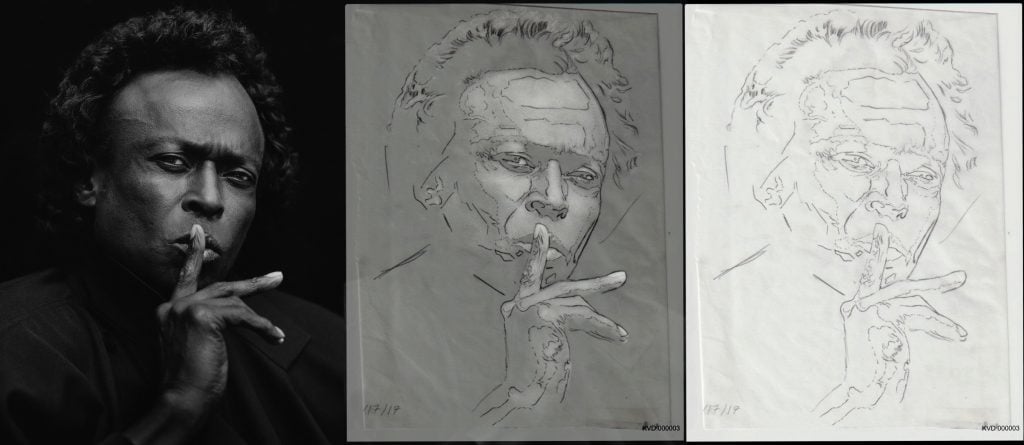
Jeffrey B. Sedlik’s photo of Miles Davis and line drawings Kat Von D made in preparation for her tattoo of his image. Courtesy of legal filings.
Fischer found that argument compelling; she was less moved by the idea that simply transferring a photograph to the human body was a transformative act, or that the personal reasons for getting a Miles Davis tattoo changed the meaning of the work.
The tattoo recipient is a lighting technician named Blake Farmer, who worked with Von D on a film project. She inked his arm at no charge, using Sedlik’s photograph, which Farmer provided, as a reference.
The lawsuit contends that despite tattooing the design for free, Von D “received and enjoyed indirect economic benefit in the form of advertising, promotion, and goodwill” after sharing photos of the tattoo on social media. (Farmer is not a party to the suit.)
Sedlik is seeking Von D’s profits related to sharing the photo of the tattoo in question, as well as damages. He also wants Von D to remove all photos of the tattoo from her website and social media accounts.
The issue of whether tattoo artists have to grant a license for the reproduction of their art has also been the subject of legal wrangling. In 2020, a U.S. federal judge ruled in favor of a video game company that had produced a game featuring NBA players with tattoos, finding that the players had the right to use the body art as part of their likeness.
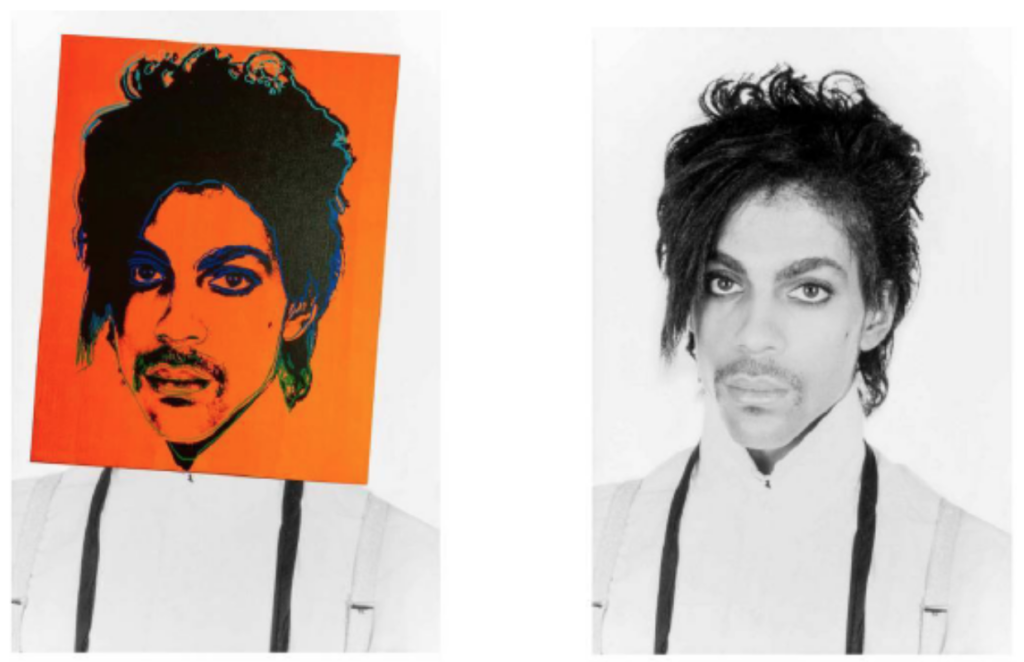
Andy Warhol’s Prince portrait overlaid on top of the original Lynn Goldsmith photograph of the musician, as reproduced in court documents.
The outcome of the Miles Davis tattoo case could be swayed by the high-profile copyright lawsuit against the Andy Warhol Foundation heading to the U.S. Supreme Court. A lower court previously found in favor of photographer Lynn Goldsmith that Andy Warhol’s Prince silk screen based on her image was not fair use.
In an interesting wrinkle, Sedlik is an expert witness for Goldsmith.
“Photographers are in the business of licensing their copyright to others—including licenses to fellow artists to create derivatives,” Sedlik’s brother and lawyer, Gary Sedlik, told PhotoShelter. “When an artist creates a new work based on a photograph without authorization, the artist robs the photographer of the license fee normally applicable to ‘artist reference’ use, and any damage to the market for licensing the photograph to others.”
The judge did not refer to the Warhol case in her most recent order, instead citing the 2017 ruling in Rentmeester v. Nike, which found that an ad by the sneaker company featuring Michael Jordan did not infringe on a similar photo of the basketball star by photojournalist Jacobus Rentmeester.
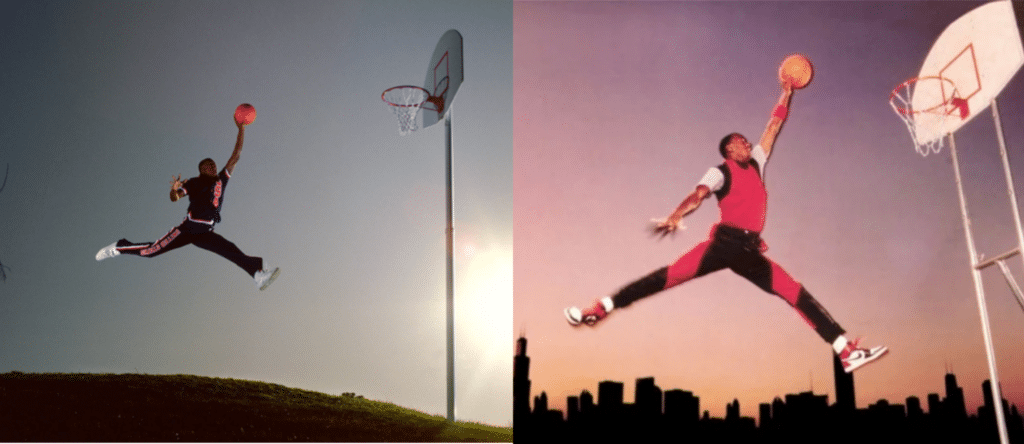
Jacobus Rentmeester’s photograph of Michael Jordan and Nike’s Michael Jordan ad. The court found that the ad was not infringing.
But Warhol still looms large over the upcoming trial.
“Everyone is wondering how the Supreme Court will address the fair use doctrine in the Warhol Foundation case,” Branvov said. “The legal questions involved here are the same—whether the works are substantially similar, and if so, whether the secondary user’s work made a fair use of the underlying work so that no license needed to be obtained.”
Regardless of the outcome, however, it seems unlikely that Farmer will be required to remove an infringing artwork from his body.
“The notion of forcing a person to undergo the potentially painful procedure of removing a tattoo,” Brankov added, “seems remote to inconceivable.”